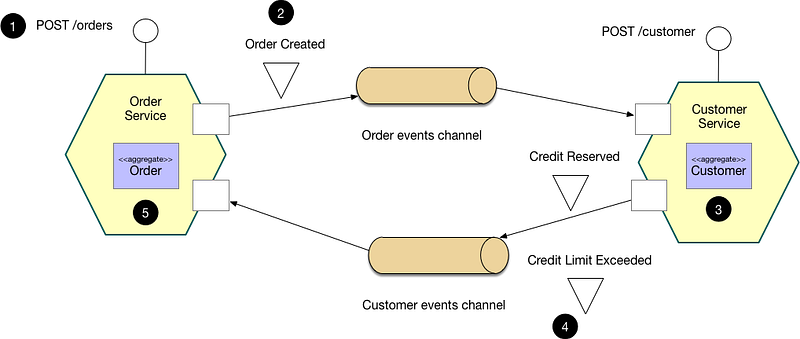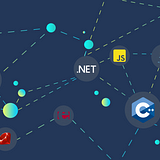Addressing Consistency Challenges in Microservices Architecture
Here are some strategies to deal with consistency issues in Microservices.

Understanding the Consistency Challenge
In distributed systems, consistency is the idea that all nodes (or services, in this context) should reflect the same data at any given time. However, achieving this level of synchronization in a microservices architecture can be challenging due to the decentralized nature of the design, which can result in inconsistency.
Microservices often have their databases to ensure loose coupling and independence. Consequently, changes in one service might take time to be reflected in other services, leading to potential inconsistencies, especially during concurrent operations.
Strategies to Address Consistency Challenges in Microservices
Here are some strategies to deal with these consistency issues:
Eventual Consistency
Eventual consistency is a model that allows for temporary inconsistencies between services, with the understanding that all services will eventually hold the same, consistent data. This model works well when absolute consistency between services isn’t a requirement.
Event-driven architectures, where changes in one service trigger events that notify other services, can help implement eventual consistency. However, this model might require sophisticated retry and error-handling mechanisms to ensure eventual consistency.
Distributed Transactions (Two-Phase Commit)
Distributed transactions can be implemented in scenarios where a high level of consistency is required. A two-phase commit (2PC) is a type of distributed transaction that ensures all services either commit or roll back their changes together, thus maintaining consistency.
However, distributed transactions can affect the performance and availability of services and might only sometimes be the best option. They are also susceptible to failure in case of network problems, resulting in the system hanging while waiting for responses.
Saga Pattern
The Saga pattern is a sequence of local transactions where each transaction updates data within a single service. If one transaction fails, the saga executes compensating transactions to undo the impact of the preceding transactions.
This pattern maintains data consistency across multiple services without the need for 2PC. It ensures that the system can roll back to the previous consistent state if an operation fails. However, the Saga pattern requires careful design of the compensating transactions, which can be complex.
Best Practices
- Design for Failure: Understand that inconsistencies will occur and design your system to handle them. For instance, your system can provide users with a way to resolve inconsistencies manually.
- Think Data Locality: Try to design services so that they have all the data they need to perform their operations. Minimizing the interdependence of services on each other for data can help avoid inconsistencies.
- Use Service Meshes and API Gateways: Tools like service meshes and API gateways can help manage service communication and implement consistency patterns.
- Event Sourcing: This approach saves changes as a sequence of events, which can then be queried to reconstruct past states. This can be beneficial for systems that need to maintain a high level of auditability.
- Regular Monitoring and Testing: Keep a close watch on the health of your services. Regular monitoring can help you identify and address inconsistencies before they cause significant problems.
Implementing strategies to maintain consistency in microservices takes a lot of work. There are many aspects to consider and pitfalls to avoid.
Understand your Consistency Needs
Not all systems need strict consistency, and for those that don’t, implementing it can result in unnecessary complexity and performance issues. For example, suppose you’re working on an e-commerce application. In that case, it’s acceptable if a user’s shopping cart isn’t immediately updated across all devices — but it’s not acceptable if payment transactions are inconsistent. Therefore, identify the level of consistency required for each service or operation before implementing a solution.
Minimize Microservice Chaining
Microservice chaining occurs when one microservice is reliant on the response of another to complete its operations. This can lead to inconsistent data, particularly if a service in the chain fails. To avoid this, design your microservices to be as independent as possible.
Leverage Consistency Patterns
Various patterns like Saga, API Composition, and CQRS (Command Query Responsibility Segregation) have been developed to deal with consistency in microservices. Understanding these patterns and their trade-offs can help you choose the right one for your situation.
Use the Right Tools
Several tools and platforms can help manage microservices and maintain consistency. Kubernetes, for instance, can manage the deployment and scaling of your microservices. Apache Kafka or RabbitMQ can be used for reliable inter-service communication. Service meshes like Istio or Linkerd can add resilience and manage the network communication between your services.
Don’t Neglect the User Experience
Even with the best strategies and tools, inconsistencies can still occur. Ensure your application can handle them gracefully without negatively impacting the user experience. For example, if a service is temporarily unavailable, show the user a friendly message and assure them their operation can be completed later.
Wrapping Up
Implementing consistency in microservices architecture can seem daunting, but it's certainly achievable with careful planning and design. It involves understanding your system’s needs, leveraging the right patterns, using the appropriate tools, and ensuring the user experience is not negatively impacted.
Moreover, consistency is not an all-or-nothing game. You don’t need to strive for absolute consistency across your entire system. Instead, aim for the right level of consistency that each component needs, always keeping in mind the business value that the system is meant to provide. Remember, creating an effective and efficient system that meets your users’ needs and expectations is the ultimate goal.
Stay tuned, and happy coding!
Visit my Blog for more articles, news, and software engineering stuff!
Follow me on Medium, LinkedIn, and Twitter.
Check out my most recent book — Application Security: A Quick Reference to the Building Blocks of Secure Software.
All the best,
Luis Soares
CTO | Head of Engineering | Blockchain Engineer | Solidity | Rust | Smart Contracts | Web3 | Cyber Security
#microservices #architecture #distributed #data #consistency #design #api #composition #softwaredevelopment #coding #software #safety #development #building #architecture #data #google #network #communication
Further Reading:









